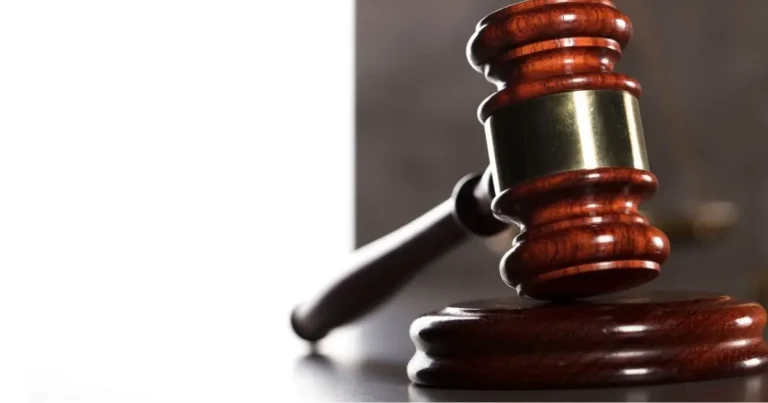What Are Enhanced Damages and Am I Eligible For Them?~6 min read
Enhanced compensatory damages are uniquely situated in our state. They stand as a rare contrast to New Hampshire’s prohibition against punitive damages. The line between prohibited punitive damages and enhanced compensatory damages can be difficult to navigate, particularly in the initial stages of litigation.
Introduction
In order to request enhanced damages, plaintiffs must plead that the defendant’s conduct was “wanton, malicious, or oppressive”. See Munson v. Raudonis, 118 N.H. 474, 479 (1978). Importantly, a plaintiff needs to only prove one factor in order to request enhanced damages. Therefore, the defendant conduct may either be wanton, malicious, or oppressive. Matters of enhanced damages are questions of fact for the trier of fact to decide. See Crowley v. Global Realty, Inc., 124 N.H. 814, 818 (1984).
Wanton conduct has been of particular interest and use to the plaintiff’s bar as an avenue for arguing enhanced compensatory damages. The Supreme Court has not expressly ruled on wanton conduct. Accordingly, the plaintiff’s bar has been left with Superior Court orders for guidance as to what actions qualify as wanton conduct. While we have factors and a general understanding of what claims will be considered for enhanced damages, it is better to think of factors and tests rather than specific acts which meet the standard for wanton conduct.
Factors Considered
Several factors have been considered by Superior Courts when tasked with determining whether enhanced compensatory damages are warranted See generally Deluca v. Ambrose, 2018 NH Super. Lexis 21:
- Severity of Conduct: The more egregious the defendant’s actions, the more likely enhanced damages become appropriate. For the sake of discussion, imagine a scenario where the defendant causes a head on collision, driving in the wrong lane, while intoxicated. While this is inferred from reviewing Superior Court decisions, for defending a motion to dismiss or motion for summary judgment, I tend to use the “eyebrow raiser” test. In other words, does the conduct seem like something that would raise the eyebrows of an average person? Assuming so, it would be worth considering an enhanced damages argument and crafting the pleadings appropriately.
- Awareness of Risk: Evidence demonstrating that the defendant was aware of the risks associated with their conduct strengthens the case for enhanced damages. Again, the reaction of an everyday person is important to keep in mind here. Everyone is aware of the risks of driving under the influence, driving on the wrong side of the road, etc. When applying the “eyebrow test” to situations like these, awareness of the risk tends to exacerbate the egregiousness of the conduct. Returning to our example, a rational person would clearly know the risks of driving in the wrong lane. Similarly, the risks of driving while intoxicated are well known and accepted today. Curiously, texting while driving or using your phone to surf the internet while driving has not been addressed by either the New Hampshire Supreme Court or Superior Courts. Like intoxicated driving as noted above, texting while driving with other complicating factors (like swerving, speeding, etc.) may result in a finding of wanton conduct.
- Compounding Factors: While not applicable in every case, having multiple egregious and risky activities involved in the same course of conduct strengthens the enhanced damages argument. For example, as in our example, a defendant who is driving both intoxicated and in the wrong lane in the same incident makes the argument for enhanced damages more compelling than for one or the other alone. Particularly helpful with this is an Order from Grafton County: Tammy Langlois, Administratrix of the Estate of Amanda Murphy v. Robert Dellinger, Docket No.: 215-2015-CV-00043. In this case, the judge denied the defendant’s motion to dismiss. In their motion, defense argued that a request for enhanced damages instruction was impermissible based on Johnsen v. Fernald and Gelinas v. Mackey, where enhanced damages were not allowed in cases involving intoxicated driving. In so finding, the Court determined that the combination of being intoxicated and additional wanton conduct of driving erratically at 100 miles per hour was a significant factor in the decision. Again, curiously, texting while driving while driving erratically at 100 mph would seem to “raise the eyebrows” of most jurors.
Defense counsel often relies on Johnsen v. Fernald, 120 NH 440 (1980) and Gelinas v. Mackey, 123 NH 690 (1983) for their rulings that enhanced damages were unavailable despite the defendant’s intoxication in those cases. Plaintiff’s counsel should be prepared to address these cases, underscoring how those cases involved intoxication alone without other compounding factors.
For the Jury’s Consideration
Having survived defense counsel’s motion to dismiss, our example case has now gone to trial before a jury. Now, you need to overcome the defense’s objection to an instruction to the jury on enhanced damages. As with other jury instructions, judges have discretion in whether to allow a jury instruction for enhanced compensatory damages. In making this decision, Judges consider the specific facts of each case and the degree of wanton conduct exhibited by the defendant. Bear in mind, however, that these are questions of fact for the jury to decide, so making the request clear as early as the pleadings is important.
Additionally, plaintiff’s attorneys should consider how they are going to demonstrate to the jury the wanton nature of their defendant’s conduct. Photos are a powerful tool, images of tire marks all over the road, smashed vehicles, etc. can set up your jury instruction on enhanced damages nicely.
Conclusion
Enhanced compensatory damages are an important tool for the plaintiff’s bar to keep in mind for when a case calls for it. In personal injury litigation, wanton conduct will be the most common avenue for enhanced damages as the remaining avenues are confined to intentional torts. By allowing compensatory damages, the court has made it possible to as much compensation for our clients as we can. Understanding how to effectively litigate an enhanced damages claim for wanton conduct is essential for New Hampshire personal injury attorneys. Moreover, including counts for texting while driving appears to be the next battleground for Plaintiff and Defense lawyers. Addressing these arguments in the context of the above cases may mean the difference between prevailing, or having the counts dismissed. Though enhanced damages are not applicable to every case, when applicable, they become a pivotal issue in litigation.
If you have been in an accident where the other driver was drinking, texting, or driving egregiously as discussed in this article, you should consider speaking with our team of personal injury attorneys. At Parnell, Michels & McKay, our personal injury attorneys are prepared to speak with you to discuss the specifics of your claim and guide you through the process to get the best outcome for you. Our personal injury attorneys have proven success with litigating cases with egregious or wanton conduct, fighting with insurance companies who deny all responsibility and refuse to pay. Please contact our firm today.
This article was published in the August 2024 New Hampshire Bar news.
Our firm blends advocacy oriented practice with effective practical solutions for all our clients in Londonderry, N. Woodstock, and throughout New Hampshire. The attorneys at Parnell, Michels & McKay provide effective representation and counseling to assist our clients facing legal questions. We simplify the process so our clients can understand and are able to participate as partners in the resolution.
Our practice includes personal injury law such as motor vehicle accidents, falls, dog bites, workers compensation, social security disability, and other injuries.
We also practice family law, including divorce, post-divorce, unwed custody and property division, and collaborative divorce, and have extensive experience in bankruptcy, probate, boundary disputes, estate planning, corporate formation and other real estate litigation.















